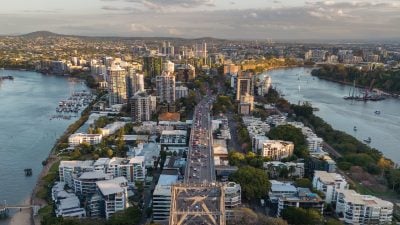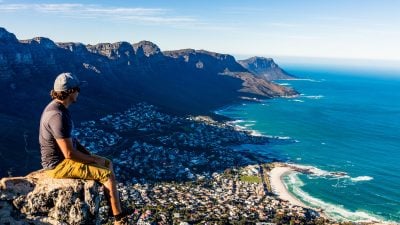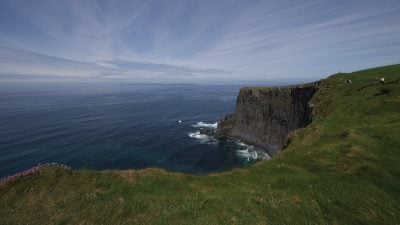Home / UK & Europe / Consider a Trip to Malta, a Sm…
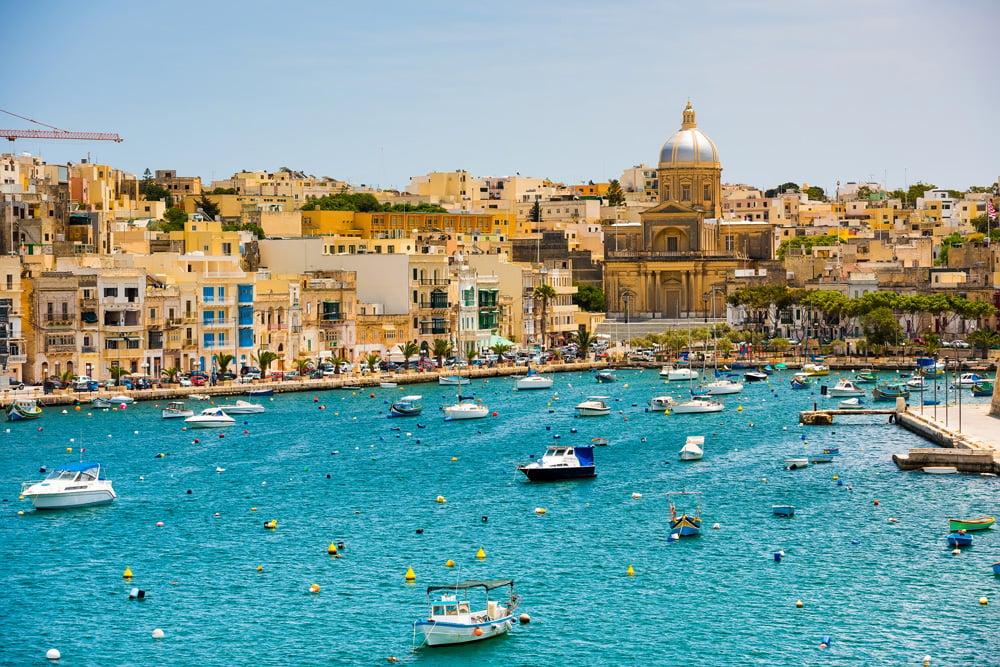
Consider a Trip to Malta, a Small but Precious Gem in Europe
Given its history, scenery, and beauty, a Malta vacation will absolutely charm you.
There are many reasons to spend time in Malta, a small country in Europe. The Knights of St. John settled here a long time ago and stayed for centuries. If you spend some time here, you will become a fan of Malta very quickly.
Here are some of the advantages of a Malta vacation. First, the island is easy to get around as it is only 27 kilometres/17 miles long and 14.5 kilometres/9 miles wide. Secondly, because of its location directly south of Italy, the weather is perfect pretty well all year round with lots of sunshine. Thirdly, although the Maltese have their own complicated language, almost everyone speaks English fluently. This is a product of Malta having been part of the British Empire until 1964. The majority of signs are in English. Fourthly, I have not met a Maltese who wasn’t friendly or helpful. Now, let’s get into a whole list of other reasons to experience a trip to Malta. When you consider the size of the country, it has more than its fair share of attractions.
Valletta
Valletta is the capital city of Malta. It is very compact, quite hilly, and surrounded by the Mediterranean Sea on three sides. Should you wish to reach the waterfront, you have to go down fairly steep narrow streets from the centre no matter which direction you take. This means you have to climb back up on the return. The views of the waterfront, known as the Grand Harbour, are spectacular. Because Valletta is a peninsula, you can see over the water, two corresponding peninsulas which you should visit.
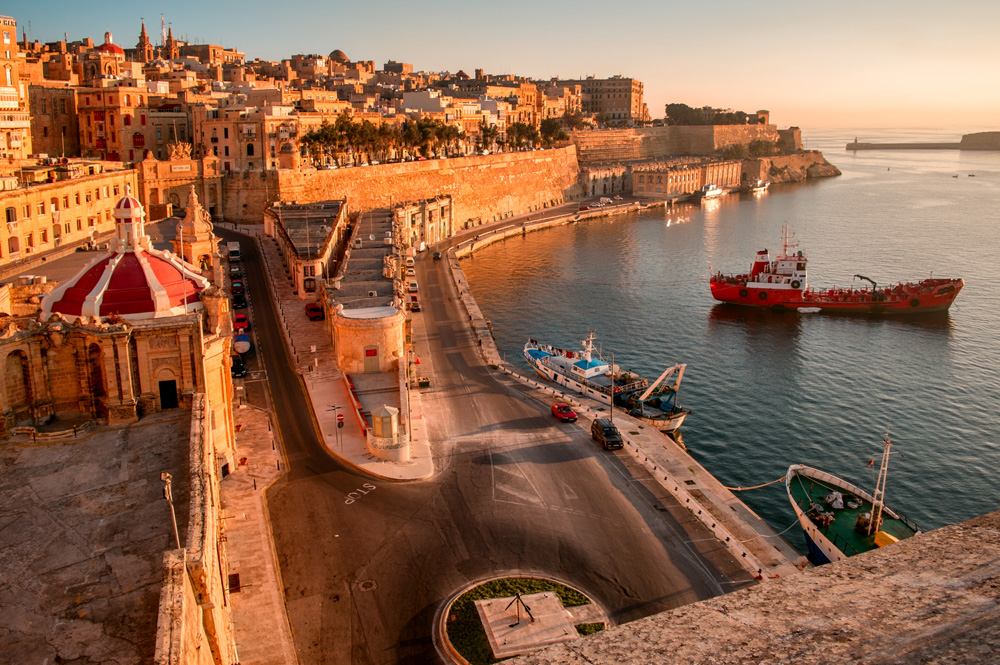
Valletta has a medieval flavour and consists, for the most part, of narrow, old and charming streets where the houses have protruding balconies, typical of Valletta. It also has the most attractions to keep you occupied. In the centre of the city is St. John’s Co-Cathedral, an impressive church built in the late 16th century. You may have to line up to go in and will be charged an entrance fee but once inside, you will be impressed. It is richly decorated and extremely ornate inside. Look for the many works of art, especially the huge painting by Caravaggio of John the Baptist. The Cathedral Museum houses illuminated choral books and a magnificent collection of 17th-century Flemish tapestries based on drawings by Rubens.
Another important building to visit on a Malta vacation is the Grandmaster’s Palace. This large building dominates one of the central squares. It was once the seat of power for the Order of the Knights of St. John and served as the Governor’s Palace during British rule. Today, it is the Office of the President. It was originally built in the 16th century. Parts of the building are open to the public. The Palace State Rooms are where the Council Chamber is home to a rare collection of exotic tapestries depicting hunting scenes from different continents and where the State Dining Room is adorned with portraits of the presidents of Malta and one painting of Queen Elizabeth II. Also open is the Palace Armoury with a comprehensive arms collection.

Valletta Fortifications
The fortifications are a series of defensive walls and other attractive fortifications which surround the city. Although ancient, they are very impressive today and the best way to view them on a Malta vacation is to walk completely around the edge of the peninsula on top of the walls looking down on the two harbours. Fort St. Elmo, on the tip of the peninsula, guards the entrance to Valletta’s harbours. The fort was built by the Knights and was the fort that bore the brunt of the Turkish attack during the Great Siege of 1565. After restoration and renovation, the fort opened to the public in 2015 and now contains the exceptional National War Museum. You can visit the parade ground and the 1559 chapel where Knights fought to the death during the siege trying to protect the altar.
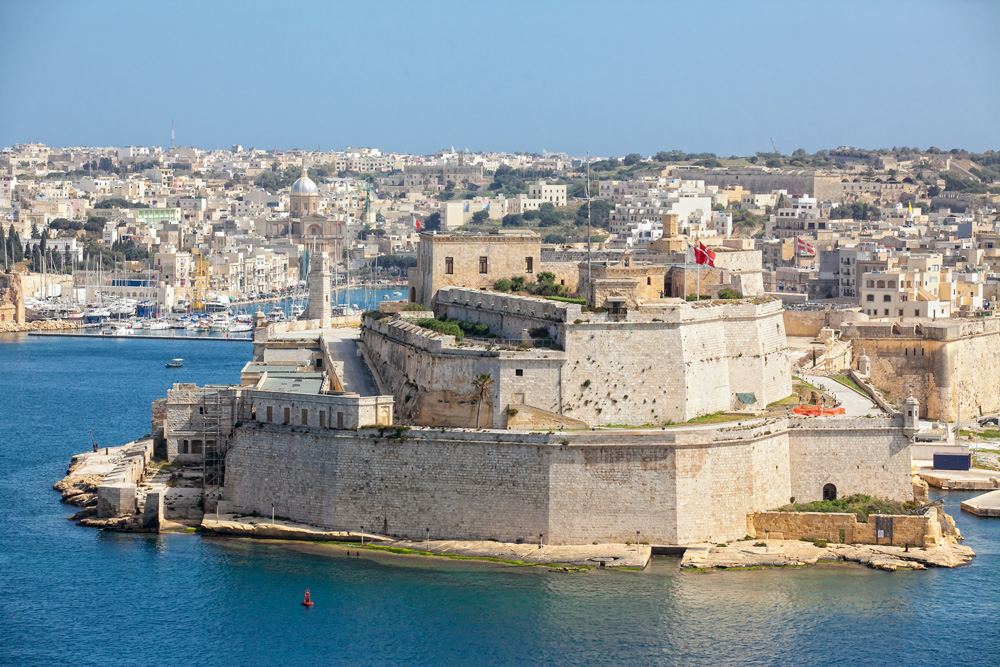
The Barraka Gardens are actually two gardens; one is called the upper and the other the lower. The latter is where the action is. Every day at noon, a cannon is fired, a time-honoured tradition. Take advantage of the elevator which goes down from the gardens to the harbour and back. It will save your legs. The upper gardens are somewhat less popular, but from here, you will have amazing panoramic views over the harbour.
Renzo Piano‘s breathtaking Parliament Building was completed in 2014. Its design includes two massive volumes of stone that look suspended in the air but are supported by stilts. Covering the rooftop are 600 square metres of panels, which generate most of the energy required to heat the building in winter and cool it in summer. The building contains the parliament chamber and the members of parliaments’ offices.

One suggestion for dining or to simply observe the locals enjoying a meal is to head to the lively City Market or as it’s known in Maltese, Is-Suq tal Belt. This is a 19th-century market hall which not only sells food but has, in the lower level, a large number of food concessions ranging from local cuisine to Asian delights and everything in between. You can choose your meal and then sit in the centre of the building to devour it.
Sliema and St. Julian’s
A ten-minute ferry ride from Valletta will take you to Sliema. On arrival here, you will find a total contrast to the place you just left. You are now in the more urban and modern part of Malta. This is a resort which was once popular as a summer resort for wealthier Valletta residents and where you will notice shops with international acclaim. The coastline here has a promenade which stretches for quite a long way, lined with hotels and apartment buildings. Venture into the back streets and you will find a number of bars and pubs. Walking far enough along the promenade, you will eventually arrive at St. Julian’s. On a Malta vacation, this is for the young at heart and can be fairly boisterous. Combined with its neighbour, Paceville, it is where you can experience the lively and colourful nightlife. Neither Sliema nor St. Julian’s has sandy beaches. The waterfront consists of rock.

The Three Cities
This might sound like a place to avoid on a trip to Malta but the name doesn’t do it justice. Another ten-minute ferry ride across the harbour will bring you to yet another contrasting attraction. It is called the Three Cites as it is made up of three distinct neighbourhoods, each one built on a peninsula. I suggest you stick with the one where the ferry docks. This is called Vittoriosa and is peaceful, charming and picturesque. A mainly residential area, it is still very pleasant to stroll along its old narrow cobblestone streets and appreciate the charming and well-maintained houses or sit in an open-air café in the main square. One of the highlights is the view back over the harbour to take in the skyline of Valletta. The Inquisitor’s Palace here is now a museum. It was once the seat of the Inquisition in Malta between 1574 and 1798 during the majority of the Knights’ rule. Apart from being the palace of the Inquisitor, it also housed the tribunal and prisons at the time. The most fascinating part of the building is the former prison cells with their elaborate carvings by prisoners on the walls. Particularly sinister is the torture chamber, with its rope contraptions for extracting confessions.
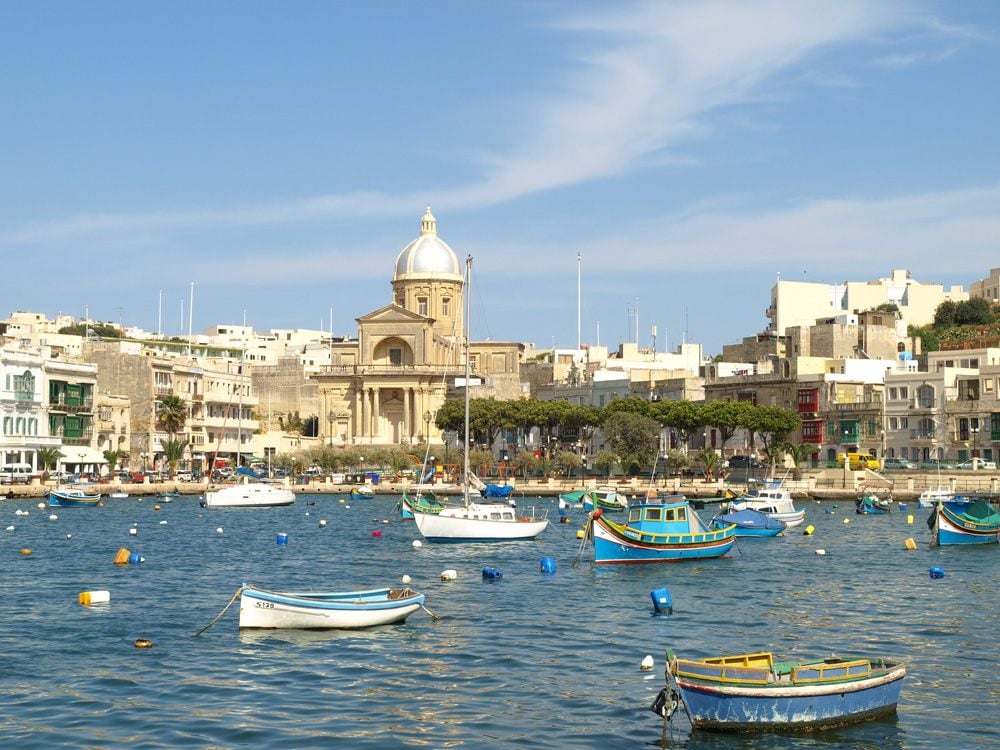
Marsaxlokk (pronounced Marsahshlock) is a fishing village about half an hour by bus from Valletta and well-worth the trip. It is one of the most picturesque places in Malta. If you do nothing else here, do try lunch at one of the many excellent outdoor fish restaurants located next to the sea where colourful fishing boats bob up and down. You can take a boat ride to the nearby Blue Grotto, a natural wonder of an entire labyrinth of sea caverns.

Further Afield in Malta
Mdina
The first consideration for trips outside Valletta should be a visit to Mdina, Malta’s old capital which has been known under a number of different names based on its rulers and its role over a span of 4,000 years since it was founded. Mostly known as Citta Notabile (The Noble City), it has been home to Malta’s most noble and dignified families. Here, on a Malta vacation, you will see a mix of Baroque and medieval architecture in the winding streets and the well-preserved churches, majestic palaces, and fortified walls. It is all reminiscent of an outdoor museum. The old city is still confined within its own walls. The 17th-century Mdina Cathedral contains ornate marble work and excellent ceiling paintings.
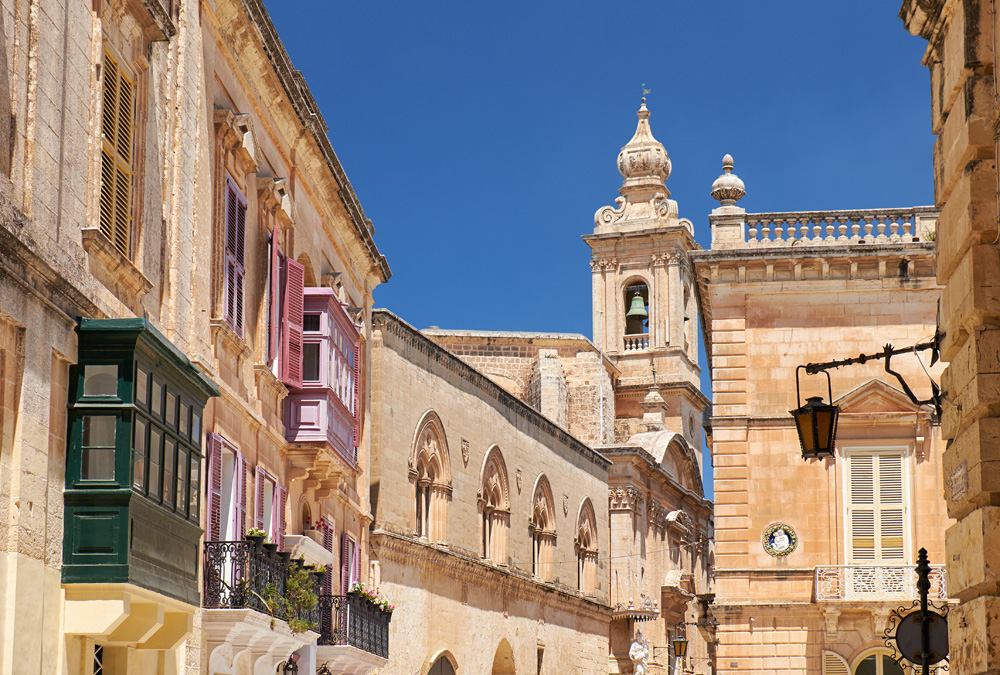
Rabat
Adjoining Mdina is Rabat. Here you can visit the Catacombs of St. Paul, an underground Roman necropolis dating back to the 4th century AD, used as the final resting place for the dead from surrounding cities like Mdina. There is room for about 1,000 bodies in total. Hundreds of people sought shelter in these crypts during air raids in WWII. St. Paul’s Church is a 17th-century Baroque church built over the grotto where it is believed the apostle St. Paul stayed and preached during his stay in Malta in 60 AD. He lived in Malta for 3 months and during this time, he was instrumental in establishing the Christian faith in Malta. The Domus Romana is a museum that contains what remains of an ancient Roman townhouse. The mosaics, which have been restored, date back to the 1st century BC. The museum also contains exhibits of Roman artifacts found throughout Malta.
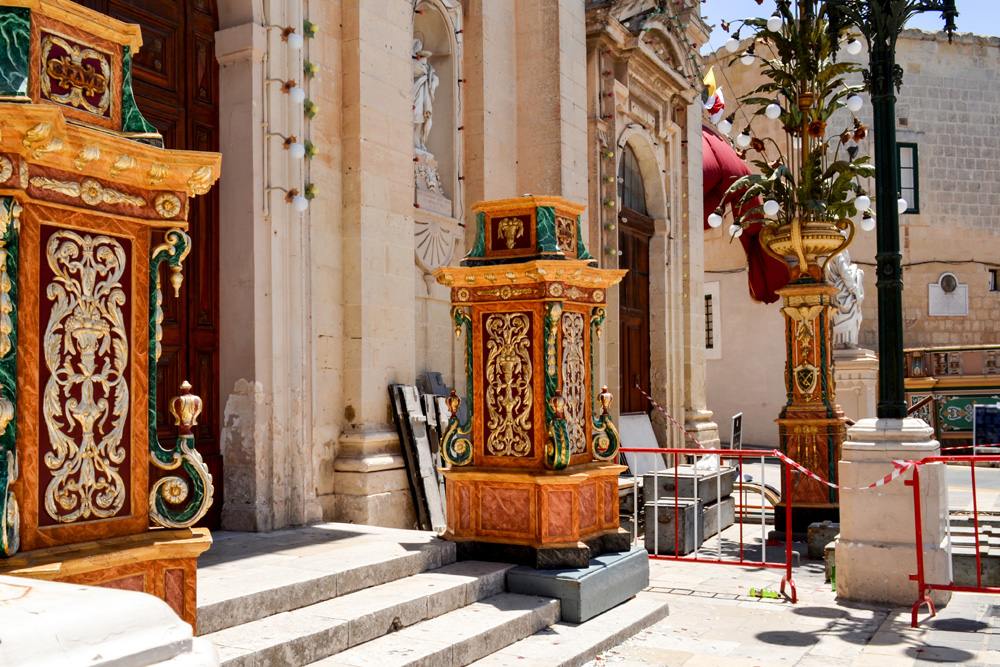
Paola
The Hypogeum is a subterranean necropolis only discovered in 1902 and a UNESCO World Heritage Site. It is a series of halls, chambers, and passages hewn out of a rock. It is believed to date back to around 3600 to 3000 BC with an estimated 7000 bodies buried here over a period of nearly 1000 years. It is among the best-preserved examples of a Maltese temple. Visits start with a short film, before you descend into the underworld in a group with a guide. The complex consists of three layers each with multiple rooms. The most impressive room is a carved copy of the above-ground temples cut into the rock.
Orendi
Mnajdra in Orendi is probably the most atmospheric of all Malta’s temples. It is a complex site consisting of three temples. The oldest temple dates back to 3600-3200 BC. The most impressive of the Mnajdra temples is the third, with its largely intact façade constructed in 3150–2500 BC. The temple of Hagar Qim was excavated in 1839 and dates back to 3600 – 3200 BC. It stands on a hilltop overlooking the sea and is a short walk from Mnajdra. Unearthed at Hagar Qim was a decorated pillar altar, two table altars, and some statues, all now on display in the National Museum of Archaeology in Valletta.
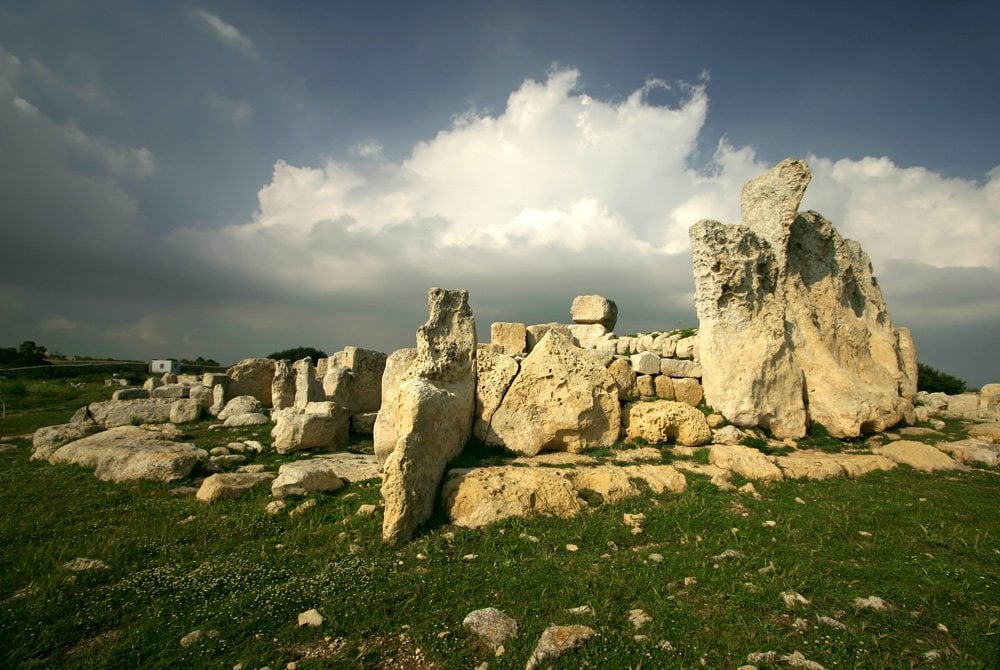
Gozo
Gozo is a quiet and peaceful island with beautiful beaches and pleasant countryside. It is home to the Ggantija Temples and the seaside resort of Xiendi. The legendary Calypso’s Cave here is thought to be from Homer’s Odyssey. Baroque churches and old stone farmhouses dot the countryside. Another feature of Gozo which can be enjoyed on a Malta vacation is the diving sites along the spectacular and rugged coastline. There are submerged shipwrecks and amazing marine life together with caves, chimneys, arches, and tunnels.
The Ggantija Temples site is one of the most important archaeological sites in the world and dates from around 3600 to 3200 BC, making them 5500 years old. It is a megalithic temple complex from the Neolithic age and older than the pyramids in Egypt, making them the world’s second oldest existing man-made religious structure. The temples have elements of a ceremonial site for a fertility rite. Due to the gigantic size of the megaliths, locals believed that the temples were the work of giants, hence the name Ggantija, Maltese for giant.

Looking for a Beach?
Mellieha Bay is the largest sandy and most popular beach in Malta, located in the northern part of the island. It is perfect for families. Activities which can be undertaken here include windsurfing, kite surfing, water skiing, and canoeing. Nearby is the Ghadira Nature Reserve which is home to a variety of small mammals and reptiles and a stopover for migratory birds passing over Malta.
Golden Bay is a very popular beach resort in north-west Malta and the most popular sandy beach after Mellieha Bay. The blue sea and the cliffs surrounding the bay provide for excellent snorkeling. The most spectacular sunsets in Malta can be experienced here.
The Blue Lagoon is one of the most beautiful places in Malta, located in a small bay with very blue water on the tiny island of Comino. It is a great place to swim and snorkel.
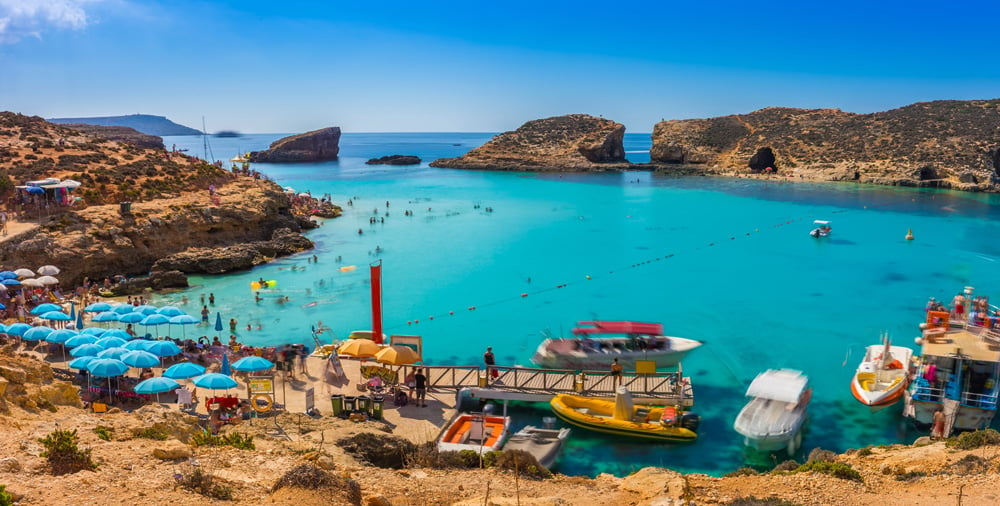
All the above is compacted into a small space called Malta, which makes it a gem of a country to see and do everything easily – time allowing – on your Malta vacation.
Get more travel inspiration by email.
Subscribe
0 Comments

Get the latest travel trends & hear about the best deals on vacations around the world.
If you’re a Globetrotter, these are the newsletters for you!

